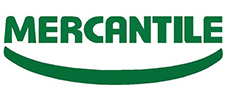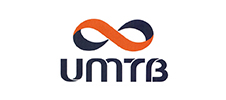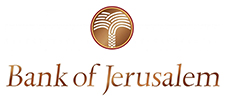Mortgage tracks
What are mortgage tracks?
Choosing a mortgage today can be a complex chore. There are many different types of mortgages that can be taken for different periods of time and you can also select a mix of different options as well
To help navigate correctly and choose the best mix of options it is critical to match the mortgage with your current financial needs and expected future growth. SAAR mortgage consultants can help you select the best mix for you and save you money in the process.
Dictionary of mortgage and interest rate concepts
Linked to Prime Interest Rate
The interest rate is based on the Bank of Israel prime rate plus a 1.5% fixed component. It varies as the Bank of Israel adjusts rates, which happens several times a year.
Advantage
Interest rates are relatively low and the principal is not linked to the Consumer Price Index (and so does not increase).
The mortgage can be repaid at any time without paying a penalty.
Disadvantage
Repayment rates can be highly variable over the life of the mortgage due to potential interest rate changes
Fixed interest rate linked to the Madad (Cost of Living Index)
The interest rate is fixed throughout the life of the mortgage and does not change. The principal is linked to the CPI and so may go up and down accordingly. Each month the outstanding principal is adjusted to reflect the CPI. (Note: that the linkage is only for the amount of the principal and does not apply to interest that accrues)
Advantages
The interest rate is fixed so the loan is relatively stable. The initial monthly repayment is relatively low compared to other options and increases later.
Disadvantages
This may seem like a tempting option since the early repayments are low, however, since the principal is linked to the CPI it may increase over time and result in higher monthly repayment rates than a mortgage linked to the Prime rate.. Early repayment of mortgage may involve penalties.
Not linked fixed interest rate
The interest rate is fixed for the life of the mortgage and the principal is not linked to the CPI
Advantages
Stability. The monthly payment is fixed and doesn’t change during the life of the loan. The principal also does not increase.
Disadvantages
The monthly repayment is relatively high. Early repayment may incur penalties.
Variable interest rates updated every 5, 7 or 10 years linked to CPI
The interest rate changes at predetermined exit points based on the choice of 5, 7 or 10 years
The interest rate is determined by two
factors:
1. Anchor- an independent rate determined by a fixed formula that does not change
2. Spread that the bank sets- which is fixed throughout the lifetime of the loan
The principal is linked to the CPI and may increase or decrease depending on inflation
Advantages
Interest rates are relatively low compared to other options. No early repayment penalties if repaid at predetermined exit points
Disadvantages
Risk of increased interest rates at exit point; Risk of inflation and therefore risk of increase in principal; Risk of early repayment fees if repay at non-exit interval
Variable interest updated every 5 years but not linked to CPI
This is similar to other variable interest rate options but in this case the principal is not linked to the CPI. Here too the interest rate is determined by
1. Anchor- an independent rate determined by a fixed formula that does not change
2. Spread that the bank sets- which is fixed throughout the lifetime of the loan
Advantages
Low interest rates relative to fixed not linked option; Since not linked to CPI the principal does not increase; No repayment penalty when repaying at set exit points
Disadvantages
Risk of increased interest rate at exit points; Potential penalties if repay loan at times other than fixed exit point
Foreign currency linkage- Dollar or Euro
This is a variable rate option linked to foreign currency rather than Cost of Living Index. It is often chosen by people whose primary source of income or savings are in foreign currency as a hedge against currency fluctuations or because they believe that this will be a better than the Israeli denominated one. The interest rate is based on LIBOR (London Interbank Offered Rate) of that currency plus a fixed premium.
Advantages
Very flexible repayment terms. Hedged currency fluctuation risk
Disadvantages
Very high fluctuations. Principal is linked to exchange rate of the foreign currency and can increase dramatically. There is no ceiling protection for increases or decreases.
Other terms
Grace period
period: A period during which no repayment of principal is made is a partial grace period. During a full grace period no payment at all is made, in which case additional interest accrues.
Equal Principal Table
Repayment of principal is spread evenly throughout the life of the loan with the addition of the interest payment. As the life progresses, there is a smaller amount of principal to repay and therefore the payment decreases.
Spitzer Table
Fixed repayment each month for the life of loan. Part of this is the interest payment and part the repayment of the principal. On average, during the first half of the mortgage the payment is made up primarily of interest payments and a small repayment of principal. During the second half of the mortgage it switches and most of the payment is repayment of principal.
We work with all the banks








Questions and Answers
In the matter of mortgage tracks
?How much financing can I obtain
Israeli citizens can get up to 75% of the value of the property. Non-citizens can get up to 50% of the value of the property in Israel.
?Must I take a mix that is 1/3 Prime, 1/3 Variable and 1/3 Fixed
No, there is no required mix. You can select the one that is most appropriate for your needs, as long as it abides by the rules of the Bank of Israel.
?What are the Bank of Israel requirements regarding mortgages
There are three main requirements. A) Variable interest rate mortgages where the interest rate changes in fewer than 5 years (Prime, Dollar, and Euro) may not exceed 33% of the total mix. B) Variable interest rate mortgages where interest rates change after 5 years may not exceed more than 66% of the mix. C) Every mix must include at least a fixed interest rate component of at least 33%
Different rules apply for foreign residents and for Israelis earning salaries in foreign currencies
?Which is more advantageous - taking a mortgage according to the fixed principal or Spitzer
The answer is not straightforward and depends upon several factors, such as your current your and future financial situations and when you intend to return the loan. For example, if you prefer to repay a large amount towards the beginning of the mortgage or you expect that your income may be reduced in the future, you may prefer the return according to the fixed principal table. If you prefer a fixed monthly payment you may choose the Spitzer method. However, since this is a complex issue with many different financial components, you should consult with a SAAR mortgage professional.
?Is it preferable to select non-linked over linked mortgages
This depends upon the timeframe of the loan and expectations of inflation rates. It is important to compare returns on non-linked and linked investment vehicles for the same timeframes, adding in the inflation component, to give a realistic evaluation of which option is best for you.
For initial consultation
Want to know more about loans and mortgages?
